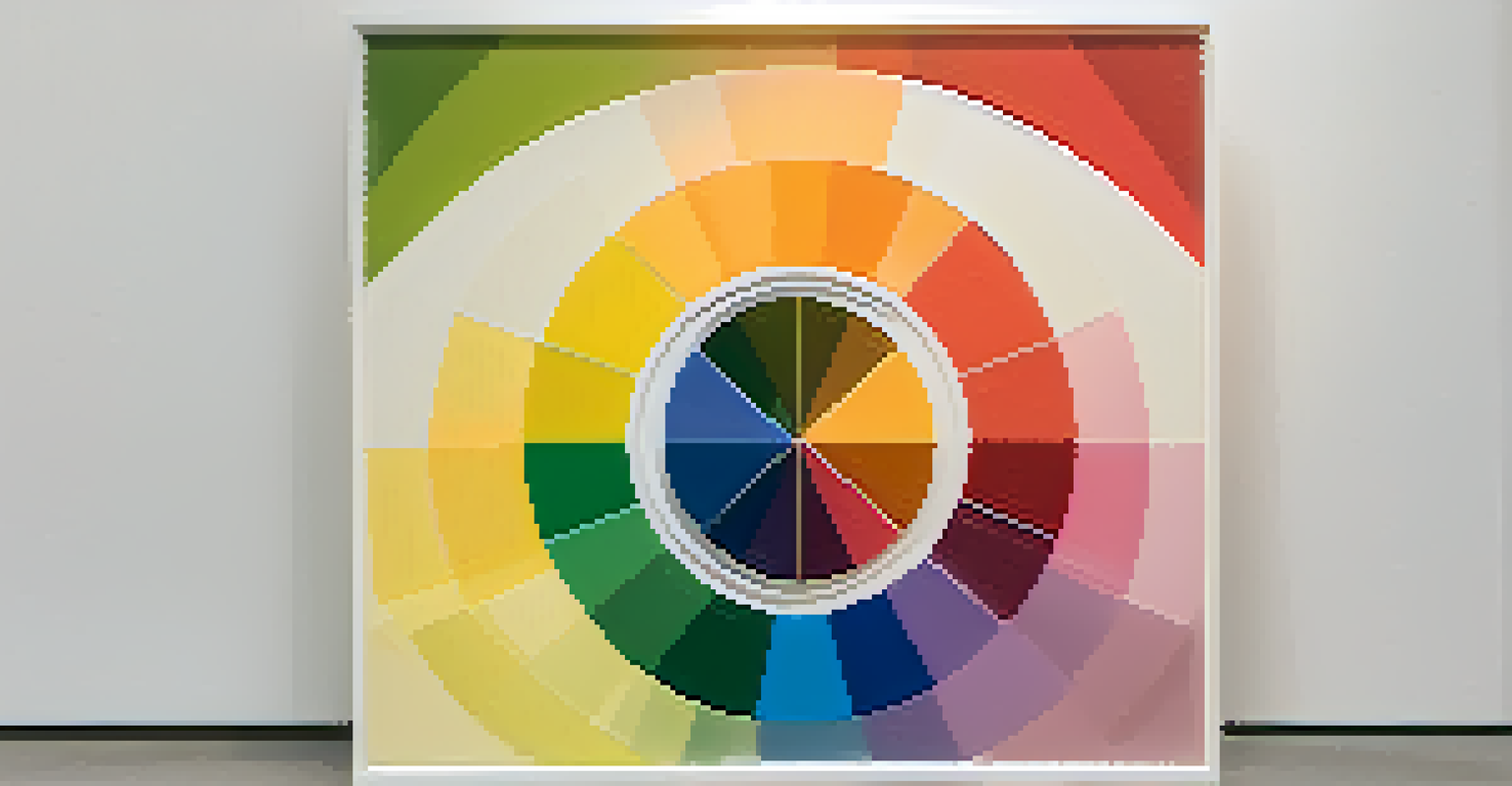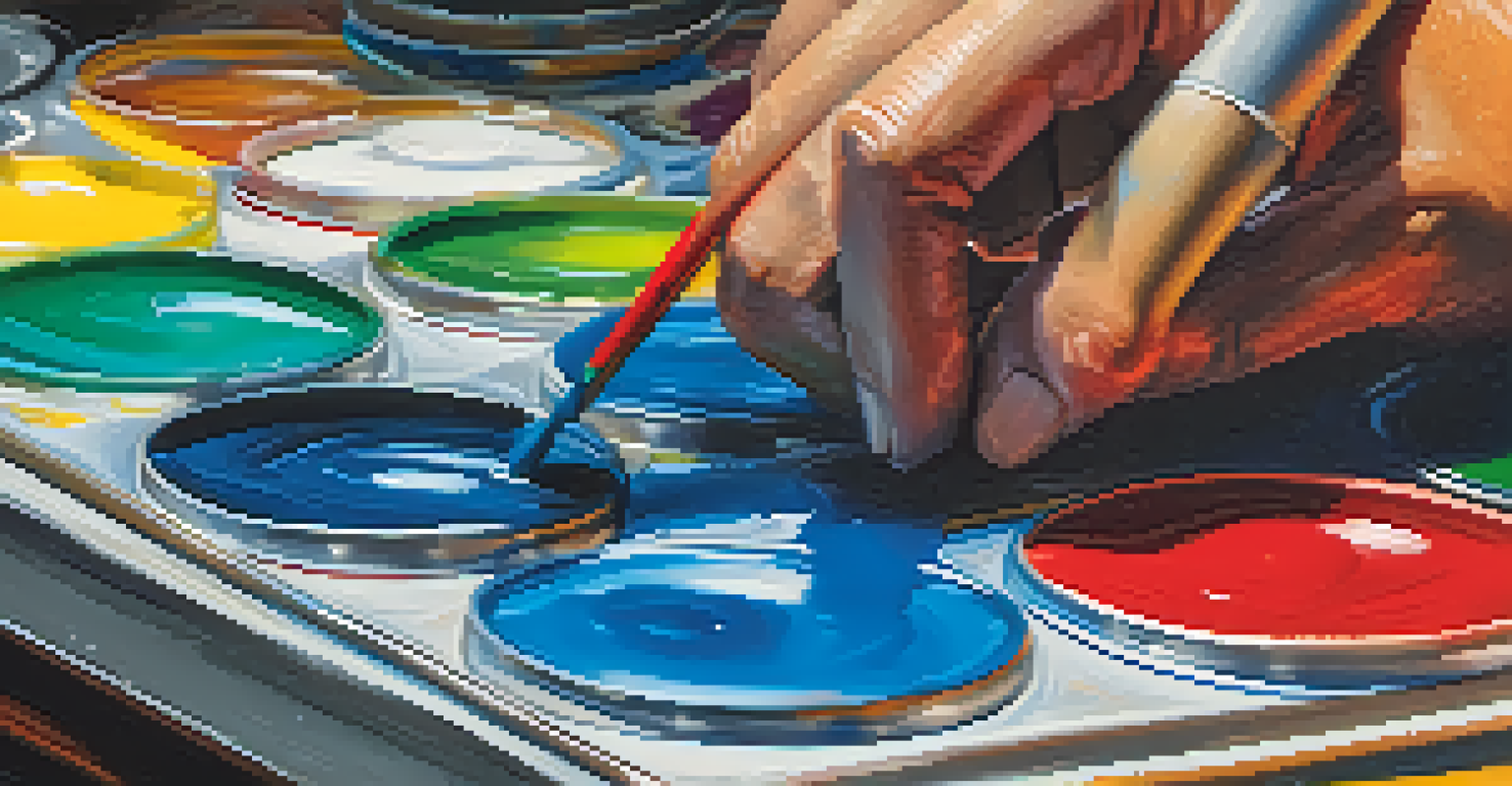Creating Emotional Impact Through Color in Art Education

Understanding the Psychology of Color in Art
Color is more than just a visual element; it carries emotional weight. Each color can evoke different feelings, like blue for calmness or red for passion. In art education, understanding this psychology helps students use color intentionally to convey their messages.
Color is the keyboard, the eyes are the harmonies, the soul is the piano with which the artist plays.
For instance, a student painting a sunset might choose warm oranges and yellows to evoke happiness. Conversely, using darker colors can express sadness or tension. This awareness of color psychology allows students to connect with their audience on a deeper level.
By integrating color theory into the curriculum, educators can empower students to explore their creative expression. This understanding creates a foundation for making impactful art that resonates emotionally with viewers.
Exploring Color Theory: The Basics
Color theory is a framework that helps artists understand how colors work together. The color wheel, which includes primary, secondary, and tertiary colors, serves as a useful tool. By learning about complementary and analogous colors, students can create harmony or contrast in their artwork.

For example, using complementary colors like blue and orange can make an artwork pop, drawing the viewer's eye. Teaching these principles encourages students to experiment with different combinations, fostering creativity. This experimentation can help them discover their unique artistic voice.
Color Evokes Emotional Responses
Understanding how colors influence emotions helps artists convey deeper messages in their artwork.
Incorporating discussions about color theory into art classes not only enriches the learning experience but also enhances emotional expression. When students understand these concepts, they can create pieces that truly resonate with their intended emotions.
The Role of Cultural Context in Color Perception
Colors can hold different meanings across various cultures, which is crucial for students to understand. For instance, while white represents purity in some cultures, it may symbolize mourning in others. This cultural context influences how audiences perceive art and the emotions it conveys.
Colors, like features, follow the changes of the emotions.
Educators can encourage students to research the significance of colors within different cultures. By doing so, they can create art that respects these meanings while also expressing their personal narratives. This approach fosters empathy and understanding in their work.
Incorporating cultural discussions about color enriches students' perspectives and enhances their emotional impact. It encourages artists to create more nuanced pieces that resonate on multiple levels with diverse audiences.
Using Color to Convey Personal Narratives
Art is often a reflection of personal experiences, and color can play a pivotal role in conveying those narratives. Students can use specific colors to express their feelings about a particular event or memory. For example, a vibrant yellow might represent a joyful moment, while a muted gray could reflect a challenging time.
Encouraging students to reflect on their own stories can lead to powerful artistic expressions. By identifying colors that resonate with their experiences, they can create pieces that not only tell their story but evoke emotions in others. This connection between artist and audience is at the heart of impactful art.
Cultural Context Shapes Color Meaning
Recognizing the different meanings of colors across cultures enables artists to create more empathetic and resonant pieces.
Through guided exercises that explore personal narratives, educators can help students harness the power of color. This practice not only enhances their artistic skills but also cultivates emotional intelligence and self-awareness.
Color and Mood: Creating Atmosphere in Art
The mood of a piece can be dramatically altered by the choice of color. Cool tones like blues and greens can create a serene atmosphere, while warm tones can evoke energy and excitement. Teaching students how to manipulate these colors allows them to set the desired mood in their artwork.
For instance, an artist might use dark shades to create a somber scene or bright colors to illustrate joy. Understanding how to use color to influence mood empowers students to take control of their artistic expression. This skill is essential for creating artwork that resonates with viewers.
By experimenting with different color palettes in their projects, students can learn firsthand how color affects mood. This exploration opens up a world of possibilities, allowing them to create more immersive and impactful art.
Practical Exercises to Explore Color Emotion
One effective way to teach the emotional impact of color is through hands-on exercises. Activities like creating mood boards or color palettes can help students visualize the emotions they want to convey. For example, they might compile images that evoke feelings of nostalgia or happiness using specific color schemes.
Another engaging exercise is to have students create a piece of art using only one color, exploring its different shades and tones. This challenge encourages them to dive deep into the emotional spectrum of a single color. Such activities foster creativity and allow students to express complex emotions.
Practical Exercises Enhance Learning
Hands-on activities allow students to explore the emotional impact of color, fostering creativity and critical thinking in their art.
By incorporating these practical exercises into the curriculum, educators can enhance students' understanding of color's emotional impact. This experiential learning not only solidifies theoretical concepts but also encourages students to think critically about their artistic choices.
The Future of Color in Art Education
As art education evolves, so does the understanding of color's role in emotional impact. With advancements in technology, new tools and mediums are emerging that allow for innovative color exploration. Educators can leverage these tools to enhance learning and creativity in their classrooms.
For instance, digital art software offers a myriad of color options and effects that can inspire students to experiment beyond traditional mediums. By embracing these advancements, teachers can keep the curriculum fresh and relevant. This adaptability is crucial in fostering a love for art among students.

Looking ahead, incorporating discussions about color trends and their emotional implications will be essential. By preparing students to navigate the changing landscape of color in art, educators are equipping them with the skills to create meaningful and impactful artwork in the future.